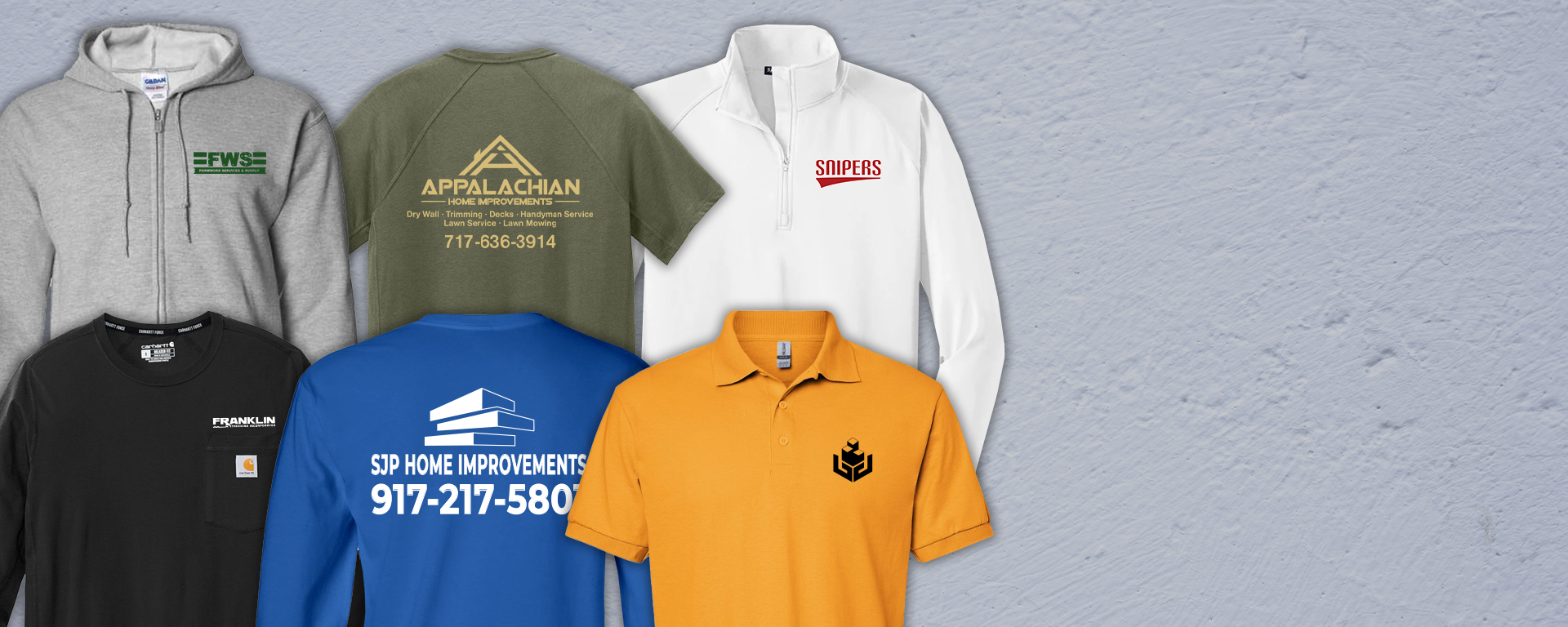How Branded Clothing Enhances Your Style Through Thoughtful Fabric Use
How Branded Clothing Enhances Your Style Through Thoughtful Fabric Use
Blog Article
Understanding Garments: The Importance of Material Selections in Your Closet
The selection of fabric in garments plays a crucial role in both visual appeals and capability. Different products offer varying levels of breathability, convenience, and longevity, straight affecting the wearer's experience. Understanding these subtleties can boost one's wardrobe substantially. Yet, several forget just how these options can influence not simply individual design, yet additionally sustainability. What fabric choices could redefine your wardrobe and align it with both style and obligation?
The Duty of Textile in vogue and Performance

Typical Textile Kinds and Their Attributes
When choosing apparel, understanding the characteristics of usual fabric types is crucial for making educated options. Cotton, a widely-used natural fiber, is recognized for its versatility, soft qualities, and breathability, making it suitable for sportswear and day-to-day garments. Bed linen, another all-natural alternative, boasts excellent moisture-wicking residential properties and an unique structure, perfect for warm climates.Wool, commonly favored for its warmth and durability, differs in excellence; merino wool is soft against the skin, while coarser kinds are utilized for outerwear. Artificial materials like polyester and nylon offer durability and resistance to wrinkles, making them preferred for activewear and traveling garments. Lastly, blends, which integrate artificial and all-natural fibers, can improve capability while preserving convenience. By recognizing these fabric features, people can select clothing that straightens with their lifestyle and visual choices.
Breathability and Comfort: Choosing the Right Fabrics for Different Environments
Picking the right textiles for numerous environments can greatly improve convenience and overall wearability. Breathable materials are important in warm environments, as they permit air flow and wetness evaporation. Fabrics such as cotton, bed linen, and moisture-wicking synthetics properly attract sweat away from the body, maintaining the user cool and dry. On the other hand, in cooler climates, thicker fabrics like wool or fleece supply insulation while preserving breathability, ensuring warmth without overheating.Additionally, the option of material weight plays a crucial role; light-weight textiles are preferable for summer season, whereas heavier options are fit for winter season wear. Comprehending the one-of-a-kind buildings of each fabric makes it possible for people to dress suitably for varying climate condition. Eventually, selecting comfortable and breathable textiles customized to details environments can greatly boost everyday convenience and improve the general experience of wearing garments.
Toughness and Care: How Fabric Influences Longevity of Your Wardrobe
Picking the best materials can considerably influence the resilience and treatment needs of a closet. Fabrics such as cotton and polyester are understood for their strength and ease of upkeep, making them perfect for day-to-day wear. In contrast, delicate products like silk and shoelace require more cautious handling and specialized cleaning techniques, which can boost the moment and initiative required for care. Branded Clothing.Durability is also affected by the material's weave and coating; tightly woven textiles often tend to withstand wear and tear much better than freely woven options. Furthermore, artificial blends typically supply boosted toughness, integrating the finest qualities of multiple fibers.Understanding the care instructions for each and every material is necessary, as inappropriate drying out or cleaning can result in premature wear. Eventually, selecting resilient products can bring about a longer-lasting wardrobe, decreasing the regularity of replacements and contributing to an extra sustainable style Discover More Here choice
The Effect of Textile on Fit and Shape

Lasting Material Selections: Making Eco-Friendly Decisions
The influence of material prolongs beyond fit and shape to encompass environmental variables, triggering an expanding interest in lasting textile options. Environmentally friendly fabrics, such as organic cotton, hemp, and Tencel, are obtaining traction among customers that prioritize sustainability in their wardrobes. These materials are typically generated with less chemicals and water, minimizing their eco-friendly footprint.Additionally, recycled materials, made from post-consumer waste, supply a cutting-edge service to the fabric industry's air pollution issue. Brands significantly embrace openness in their sourcing methods, allowing customers to make educated decisions regarding their purchases.Choosing sustainable textiles not just sustains honest practices yet likewise motivates the garment industry to embrace more liable manufacturing approaches. As recognition of environmental problems increases, people are urged to show on the long-term impact of their material choices, cultivating an activity towards a more ecologically mindful and sustainable approach to fashion.
Boosting Design: Exactly How Material Can Change an Attire
While many might focus on shade and cut when selecting an attire, the option of fabric plays an essential function in boosting design and improving total look. Various products convey distinct state of minds and messages; as an example, silk exudes deluxe and refinement, while jeans uses a laid-back, kicked back ambiance. The structure and drape of a material can significantly alter the silhouette, with structured fabrics giving a polished look and softer ones developing an extra fluid, kicked back aesthetic.Moreover, the weight of the fabric affects wearability across periods. Light-weight materials like bed linen and cotton are perfect for summer, while heavier materials such as woollen and velour supply heat and sophistication in chillier months. Understanding fabric properties, such as breathability and stretch, additionally equips people to make enlightened selections that enhance comfort without endangering style. Inevitably, the best textile can change an outfit from regular to phenomenal, making it a crucial factor to consider in any kind of wardrobe.
Frequently Asked Concerns
Just how Do I Identify the Textile Content of My Clothes?
To determine material web content, click resources one can take a look at care labels, conduct burn examinations for fiber recognition, or consult textile swatches. These approaches help differentiate products, ensuring educated options for garments care and upkeep in day-to-day wear.
Can Textile Selection Affect My State Of Mind or Self-confidence?
Material choice original site can considerably influence a person's mood and confidence. Branded Clothing. Specific materials may evoke feelings of comfort or beauty, while others can feel restrictive or unflattering, inevitably affecting self-perception and emotional health throughout the day
What Fabrics Are Best for Delicate Skin?
For individuals with delicate skin, all-natural textiles like cotton, linen, and bamboo are usually recommended. These products are breathable, hypoallergenic, and less most likely to create inflammation, making them suitable options for comfort and skin health and wellness.
How Do I Correctly Laundry and Look After Various Fabrics?
To effectively care and wash for different fabrics, one need to think about each product's certain needs, consisting of temperature level settings, detergents, and drying techniques, ensuring durability and keeping the fabric's initial qualities for suitable use.
Exist Certain Fabrics for Athletic or Efficiency Put On?
Sports or performance wear typically makes use of textiles such as nylon, spandex, and polyester. These materials are designed for moisture-wicking, breathability, and adaptability, boosting motion and comfort throughout physical tasks while supplying resilience and assistance. Alternatively, in chillier environments, thicker textiles like wool or fleece offer insulation while retaining breathability, making certain heat without overheating.Additionally, the choice of fabric weight plays a crucial function; light-weight materials are more suitable for summertime, whereas larger choices are matched for wintertime wear. In contrast, fragile materials like silk and lace require more careful handling and specialized cleansing approaches, which can enhance the time and initiative needed for care.Durability is also influenced by the material's weave and coating; snugly woven fabrics have a tendency to stand up to wear and tear far better than freely woven choices. In contrast, stiff materials can restrict movement but provide a classic, sleek look.Moreover, the thickness and texture of the fabric can influence the visual perception of body shape. The effect of textile extends beyond fit and shape to incorporate ecological factors, motivating a growing interest in sustainable textile choices. The texture and drape of a material can dramatically alter the silhouette, with structured materials giving a sleek look and softer ones creating an extra fluid, loosened up aesthetic.Moreover, the weight of the fabric influences wearability throughout seasons.
Report this page